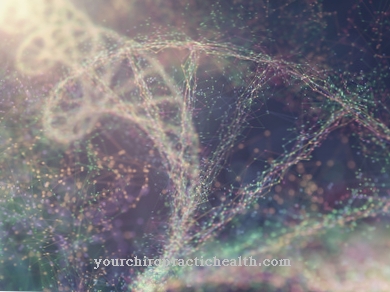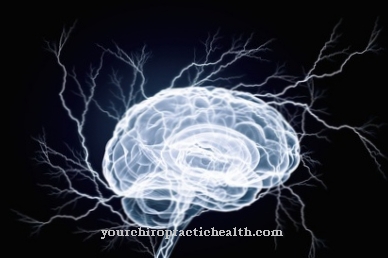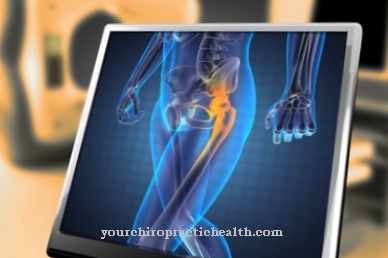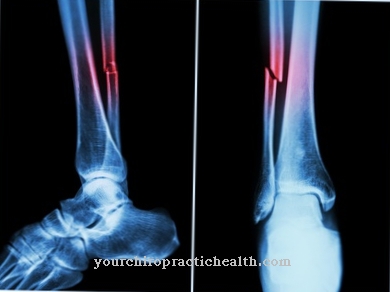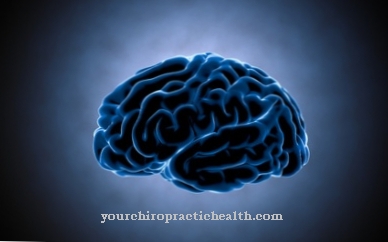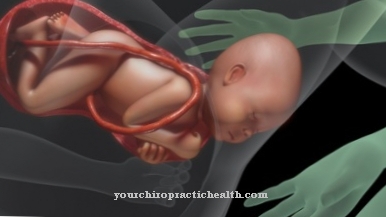Hydroxylations are chemical reactions in which hydroxyl groups are introduced into a molecule. As part of the metabolism, enzymes catalyze the hydroxylation. The corresponding enzymes are called hydroxylases.
What is hydroxylation?

Hydroxylations are very common in chemistry and biochemistry. In general, hydroxylation means the introduction of one or more hydroxyl groups into a molecule. The hydroxyl group consists of one hydrogen and one oxygen atom. For example, the catalytic oxidation of methane produces the alcohol methanol. The catalytic addition of a water molecule to ethene produces ethanol.
In biochemical processes, the addition of a hydroxyl group is supported catalytically by so-called hydroxylases. With the help of hydroxylases, for example, certain amino acids can be converted into important active ingredients in the organism. For example, phenylalanine is converted into tyrosine and tyrosine in turn into DOPA through hydroxylation. The corresponding enzymes are phenylalanine hydroxylase and tyrosine hydroxylase. Tryptophan is converted into 5-hydroxytryptophan with the help of tryptophan hydroxylase.
In the connective tissue, the amino acids proline and lysine are converted into hydroxyproline and hydroxylysine by hydroxylation. The hydroxylated amino acids there ensure the strong cross-linking of collagen and thus also the strength of the connective tissue.
Another important hydroxylation reaction is the conversion of progesterone to corticosteroids.
Function & task
Hydroxylations are very important biochemical reactions. The strength of the connective tissue is dependent on hydroxylation reactions. The amino acids proline and lysine are present in high concentrations in the collagen of the connective tissue. Both compounds can easily be provided with an additional hydroxyl group using hydroxylases. The hydroxylation takes place within the protein. Hydroxyproline is formed from proline and hydroxylysine from lysine. The enzymes proline hydroxylase and lysine hydroxylase are responsible for this with the help of ascorbic acid (vitamin C). The hydroxyl groups form attachment points for sugar residues or they ensure that the individual protein molecules are linked. This networking results in a strong and flexible connective tissue.
Another hydroxylation reaction is the conversion of the amino acid phenylalanine into tyrosine. This reaction is important for eukaryotic organisms, since high phenylalanine concentrations in the cell are harmful. Tyrosine is further hydroxylated to L-DOPA. L-DOPA is a catecholamine and the precursor of dopamine. Important amino acids are finally converted into neurotransmitters through hydroxylation.
The same applies to the hydroxylation of the amino acid tryptophan to 5-hydroxytryptophan. This compound, in turn, represents a precursor to serotonin, another neurotransmitter and tissue hormone.
Finally, the sex hormone progesterone is converted into corticosteroids through hydroxylation, which, as hormones, perform a variety of tasks in the body. These include the glucocorticoid cortisol and the mineralocorticoid aldosterone. These hormones are synthesized through the hydroxylation of progesterone and the conversion of the hydroxyl groups into keto or aldehyde groups.
Overall, hydroxylations are responsible for the build-up of different biological agents in the organism. Disturbances in these reactions can lead to serious health problems.
Illnesses & ailments
Many hydroxylations represent important intermediate steps in the metabolism. If disturbances occur in the hydroxylation, the subsequent reaction steps are also inhibited. As a result of such disorders, significant health impairments can occur. For example, an inhibition of the hydroxylysis of proline and lysine in the collagen of the connective tissue leads to a weakness of the connective tissue. In some cases, the connective tissue can be overstretched. The skin can sag and the internal organs are no longer optimally protected by the connective tissue.
There are many mutations, but very rare in each case, which lead to defects in the structure of the enzymes lysine hydroxylase or proline hydroxylase. Every single genetic defect shows different symptoms. What they all have in common, however, is the weakness of the connective tissue. The other symptoms are varied.
Scurvy is an acquired connective tissue weakness. Scurvy occurs when there is a lack of vitamin C. Vitamin C or ascorbic acid supports the two hydroxylases mentioned above. If the body is not supplied with vitamin C, lysine and proline hydroxylase can hardly support the hydroxylation of lysine and proline. The connective tissue, like the other tissues in the body, is subject to constant build-up and breakdown processes. If vitamin C is missing for a longer period of time, weak connective tissue is created because the hydroxylation no longer works. There are many serious symptoms with frequent infections, exhaustion, poorly healing wounds, skin problems, muscle breakdown, bleeding gums, high fever and much more. However, these symptoms disappear after administration of vitamin C.
Another disease in connection with disorders of hydroxylation is phenylketonuria. In phenylketonuria, the amino acid phenylalanine can no longer be sufficiently broken down, because the enzyme phenylalanine hydroxylase (PAH) is either missing or malfunctioning. Phenylalanine is harmful in higher concentrations. There is an impairment of brain development. The growth of the skull is also stopped. The result is an intellectual disability. A low-phenylalanine diet in childhood can prevent the onset of the disease.
If tyrosine cannot be hydroxylated because it lacks tyrosine hydroxylase (TYH), the very rare Segawa syndrome develops. The neurotransmitter dopamine is no longer produced in sufficient quantities. The symptoms are unsteady gait and Parkinson-like symptoms.
If tryptophan can no longer be hydroxylated due to the lack of the enzyme tryptophan hydroxylase, too little serotonin is formed. Depression is common. Finally, disturbances in the hydroxylation of progesterone can lead to hormone-related diseases.

